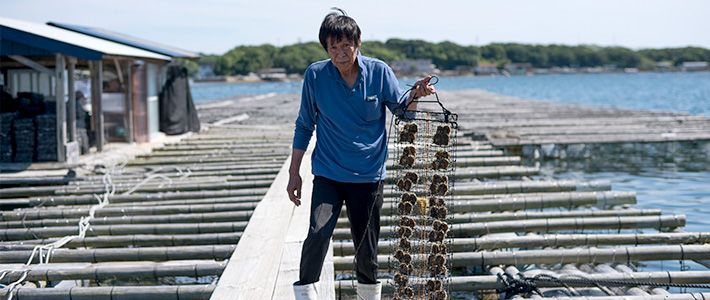
“Cool Traditions” Stay in Tune with Modern Life
A Peek into the Pearl Culture of Mie Prefecture
Guideto Japan
Culture Society- English
- 日本語
- 简体字
- 繁體字
- Français
- Español
- العربية
- Русский
Slowly and with extreme caution, a technician slips a razor-sharp scalpel into an open oyster shell and makes a tiny incision in the glistening innards of the creature within. Deftly, exchanging the scalpel for a pair of tweezers, the technician next inserts a chip of mantle and a spherical nucleus around which secretions of nacre will gradually form to create the perfect pearl.
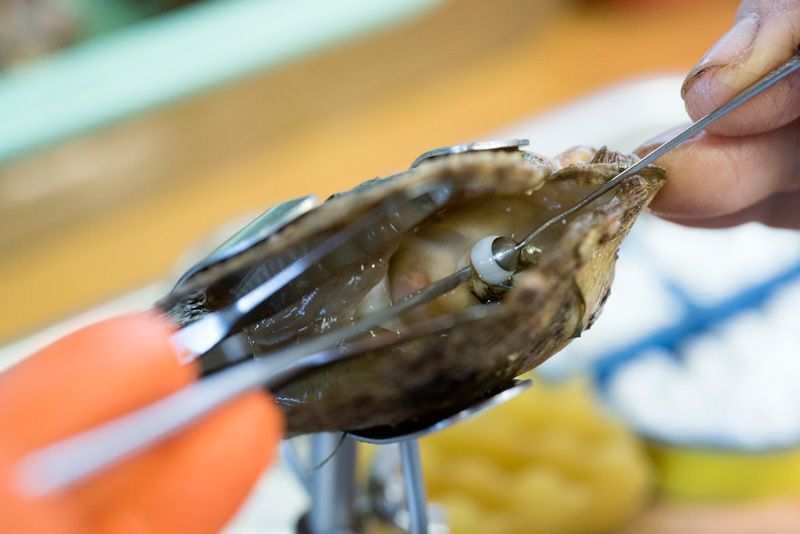 Delicate operation: inserting the nucleus that will eventually become a pearl into the open shell of an oyster.
Delicate operation: inserting the nucleus that will eventually become a pearl into the open shell of an oyster.
After removing the wooden stopper that has held it slightly open for the procedure, the technician adds the shell to a crate holding dozens of similarly impregnated Akoya oysters that are waiting to be returned to the waters of Ago Bay.
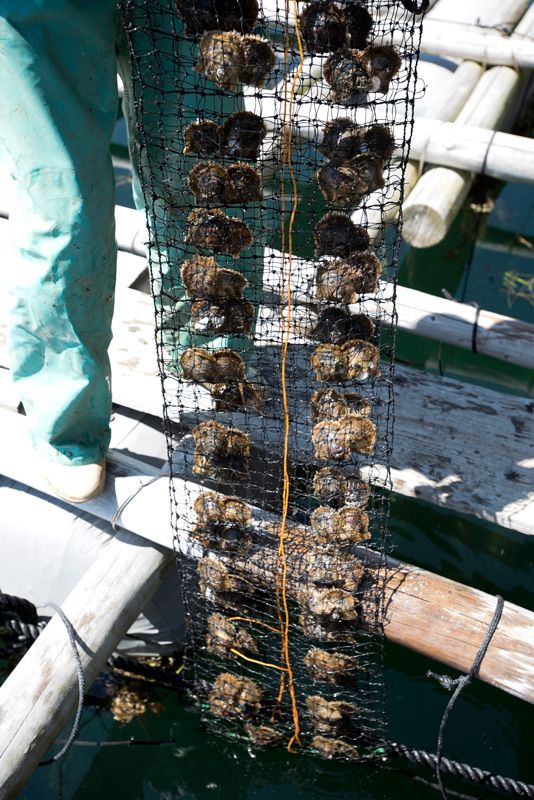 Akoya oysters develop in pairs in nets suspended below pearl rafts.
Akoya oysters develop in pairs in nets suspended below pearl rafts.
Treating Oysters as Our Own Children
Inoue Hikaru’s family has been culturing pearls in a picturesque inlet on the bay for three generations. He got his own start in the business 42 years ago, yet he still feels a tingle of excitement every time he opens a shell and discovers a lustrous pearl inside. “My motivation is to produce pearls of such quality that when a hundred people see them, every one of those people will call them perfect.”
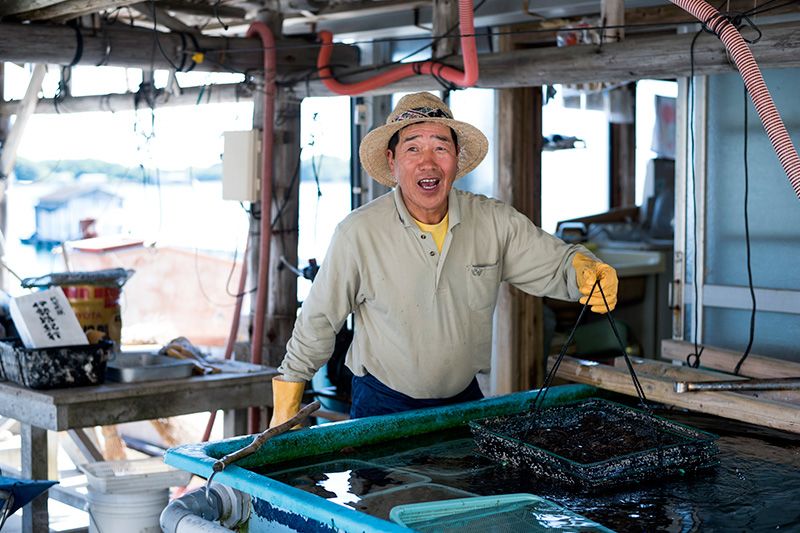 Inoue Hikaru’s family has been culturing pearls in Mie Prefecture for three generations.
Inoue Hikaru’s family has been culturing pearls in Mie Prefecture for three generations.
“Culturing pearls is a very difficult thing to do well. These oysters—just like humans—have to endure lots of environmental stresses before they can grow up and produce,” he says. “We treat each of these oysters as if it were our own child. We nurture them, and when they give us a pearl in the end, then we know that we have done a good job of raising them.”
The Way of Life, Akoya Pearls
Inoue is the owner of Inoue Pearl, based in the Mie Prefecture city of Shima. He employs a team of skilled local women to carry out the delicate work of planting seeds within the oyster shells, with each woman working on around 500 shells in an eight-hour working day. The work is exacting, he agrees, with the innards of each shell slightly different, meaning that the women use their experience as well as their skill to ensure that the oyster can survive the procedure.
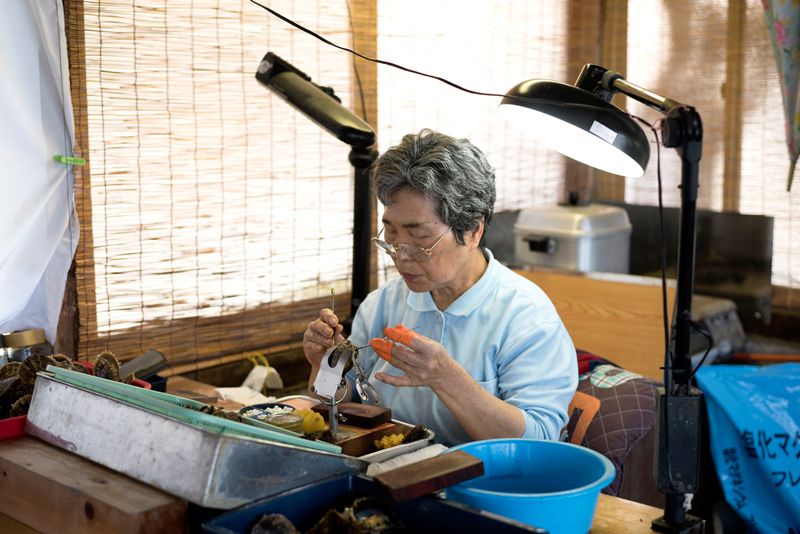 A technician carries out the delicate task of inserting the nucleus into an oyster.
A technician carries out the delicate task of inserting the nucleus into an oyster.
The women go about their painstaking work in a wooden hut atop the seawall protecting the village, just meters from a gangplank that leads down to a rickety-looking mesh of poles and planks floating on the surface of Ago Bay.
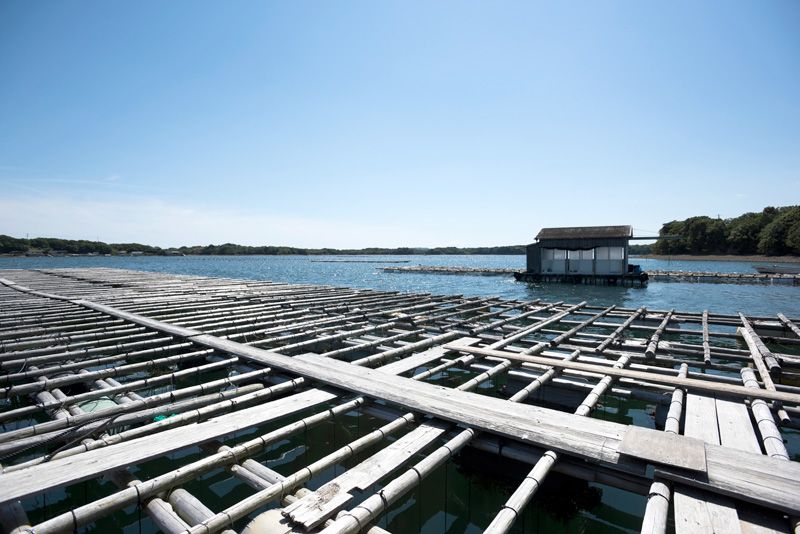 Oyster rafts float on Ago Bay.
Oyster rafts float on Ago Bay.
Juvenile oysters that fit comfortably in the palm of the hand are held in pairs in nets suspended below the pearl rafts, where they feed on the rich waters of the bay, which are constantly replenished with nutrients that wash off the surrounding hillsides.
 from left: An Juvenile oyster; An oyster reveals the stunning colors within its shell.
from left: An Juvenile oyster; An oyster reveals the stunning colors within its shell.
More mature oysters are seeded and stored in boxes that are similarly hung below the rafts for two years, while their pearls develop. The entire process takes four years to come to fruition.
Nearby, women in wide-brimmed hats and waterproof coveralls chip marine growth from the exterior of oyster shells. The sun catches the ripples on the bay. A pearl boat rocks at anchor alongside the raft.
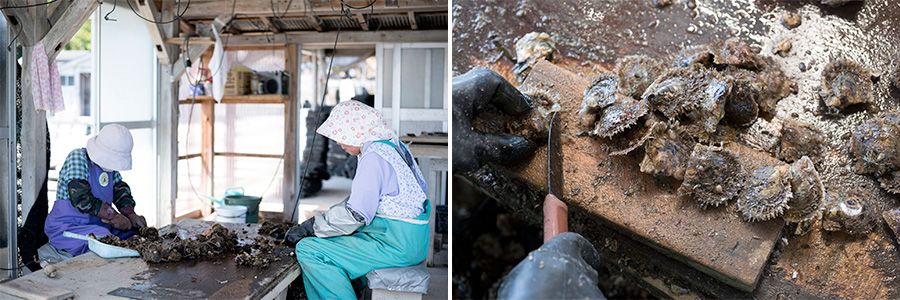 Women workers chip marine growth from the exteriors of oyster shells.
Women workers chip marine growth from the exteriors of oyster shells.
Challenge lies ahead
It is an idyllic place, agrees Morishita Bunnai, at 70 years old the head of the local pearl association, although there are challenges.
“We were hit hard by the impact of the global financial shock in 2008, although the industry has recovered since then,” he says. “Australian pearls have also emerged as a rival, largely because they are bigger, but we have seen off that challenge because of the quality of the pearls that we produce. We’re now looking to expand sales into newly emerging markets like China and Southeast Asia.”
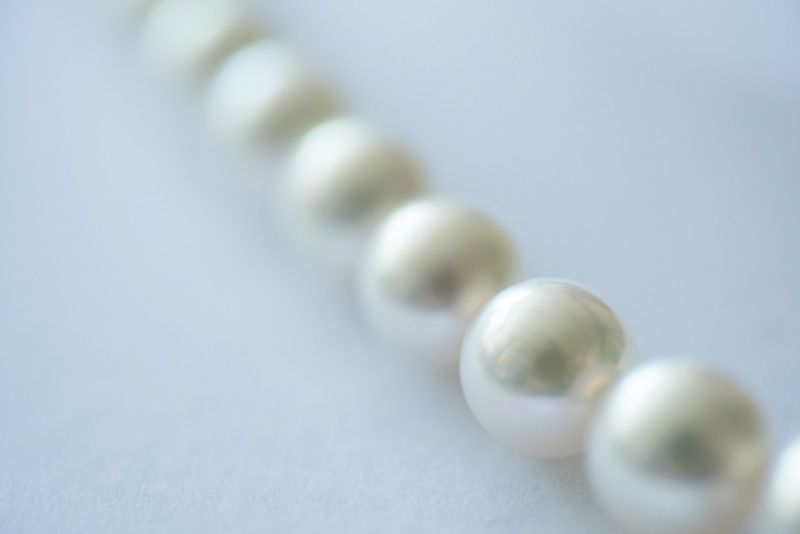 Mie farmers pursue perfection in the lustrous spheres their oysters produce.
Mie farmers pursue perfection in the lustrous spheres their oysters produce.
A Combination of Human Talent and Natural Bounty
Asked what makes pearls so incomparable, Morishita smiles and says that what sets these luminescent spheres apart is that they are purely the work of nature.
“If you have a diamond or some other precious stone, that isn’t how it was found,” he points out. “It’s been cut, shaped, and polished by people and machines. It may be beautiful, but it is no longer natural. A pearl is organic, though—a natural thing raised with care, coming from something that’s alive rather than from a lump of rock,” he adds. “A pearl is a joint effort between nature and the skill of humans. That’s, what makes all the difference.”
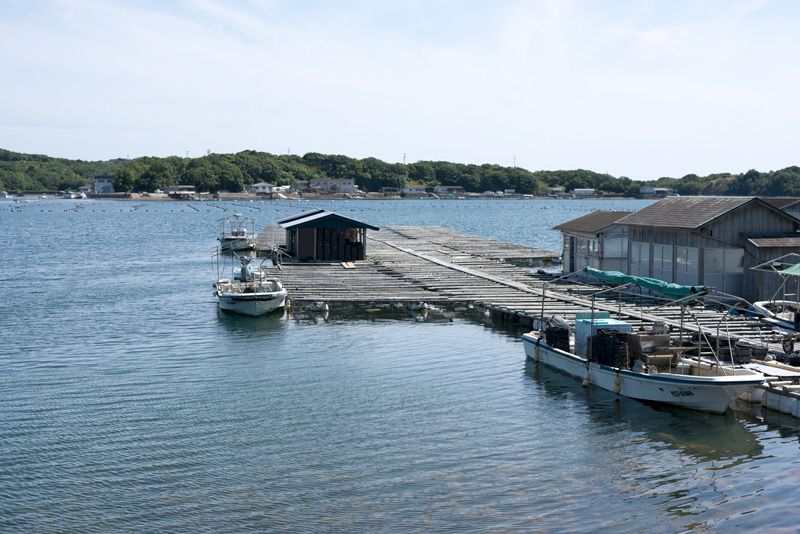 Inoue Hikaru’s pearl rafts float on the placid waters of Ago Bay.
Inoue Hikaru’s pearl rafts float on the placid waters of Ago Bay.
(Originally written in English. Banner photo: Morishita Bunnai prepares to hang a net of oysters beneath a pearl raft. All photos © Motono Katsuyoshi.)